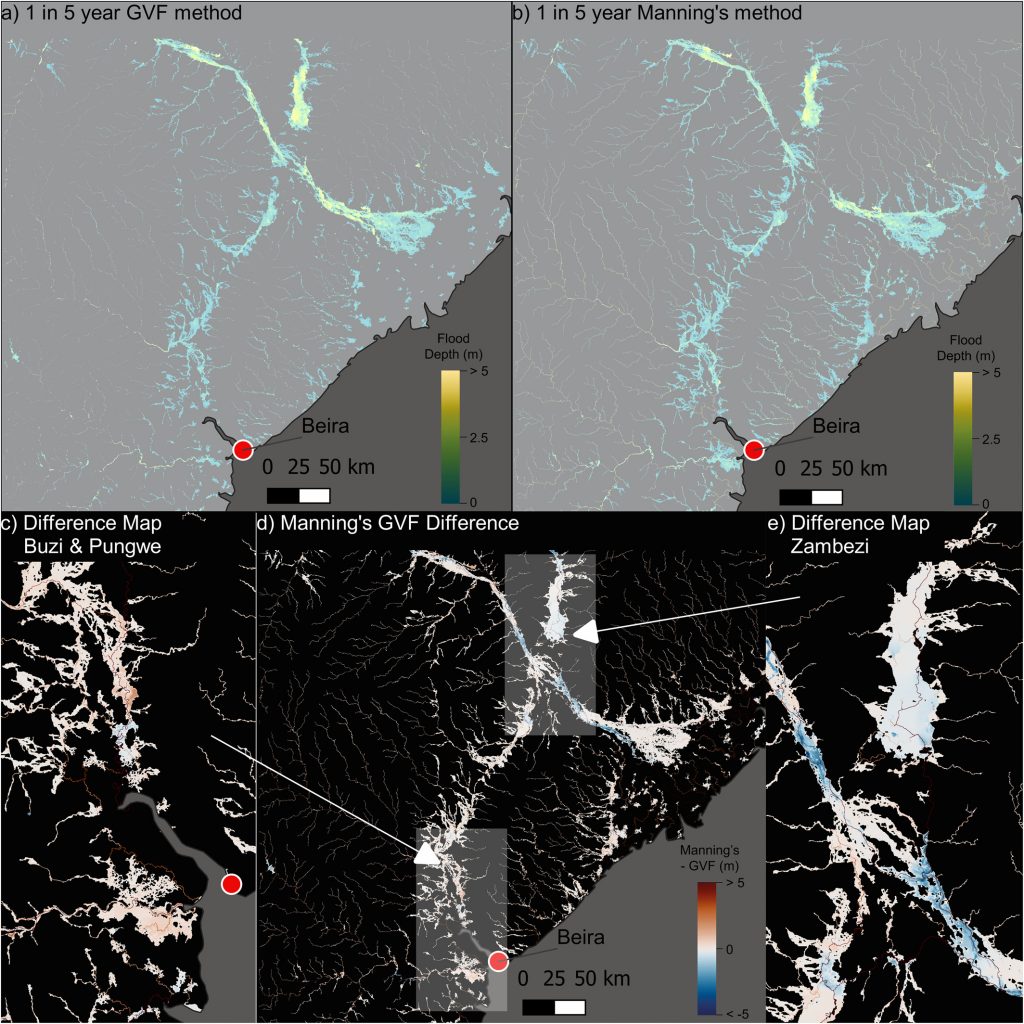Hydraullic modeling 05.05.2021
Intro
In this technical paper, we discuss the importance of estimating channel bathymetry in data-sparse areas. We demonstrate that the application of gradually varied flow theory to estimate bathymetry in a global flood model reduced model error compared to a target water surface profile by 66%.
About the paper
This research paper from Fathom delves into the challenges of flood inundation modeling in large, data-sparse areas and proposes a novel approach to estimate river channel bathymetry in global flood models (GFMs). Despite advancements in remote sensing and modeling capabilities, data-scarce regions often lack accurate river bathymetry information.
The paper argues for the adoption of gradually varied flow theory in bathymetry estimation to better account for both uniform and nonuniform flows. The study demonstrates that existing methods for bathymetry estimation in GFMs are inaccurate for certain water surface profiles, emphasizing the need for improved techniques. By applying gradually varied flow theory, the proposed approach reduces model error by 66% and eliminates bias, showcasing its effectiveness in large-scale tests, such as a case study in Mozambique.
The findings reveal a significant reduction in flood extents and floodplain storage, challenging previous assumptions about the role of floodplains in attenuating river discharges and highlighting the potential implications for flood modeling accuracy.
Key points include:
- Flood models in data sparse areas must estimate river bathymetry
- Existing methods are prone to over-prediction bias
- Channel estimation based on gradually varied flow theory is substantially more accurate




